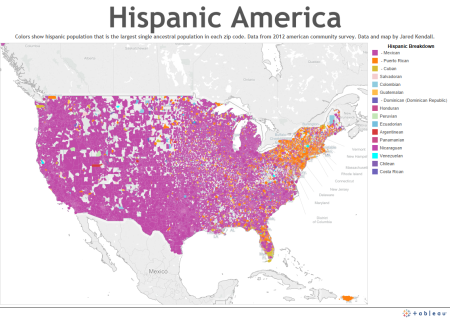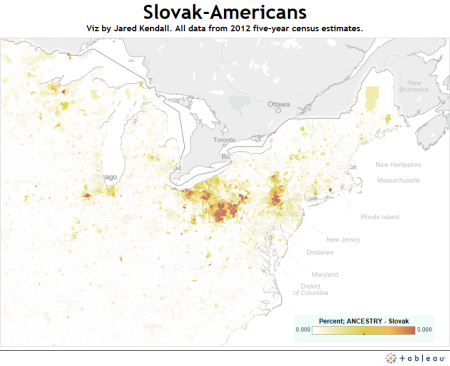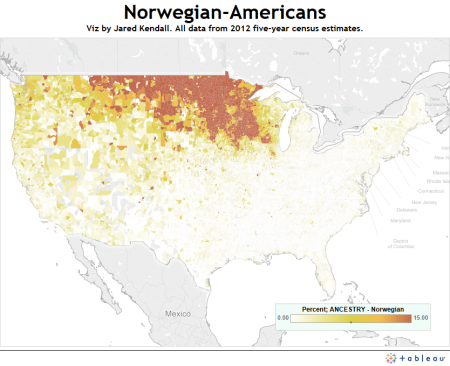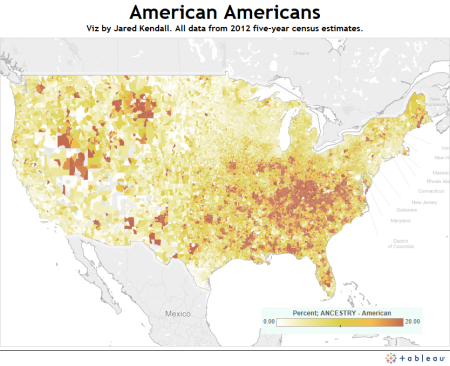 Today we look past the general term Hispanic to see where America’s Hispanics truly come from. Calling someone “Hispanic” is like calling them “European.” It speaks somewhat to their ancestral heritage, but encompasses a *very* broad swath of very different folks.
Today we look past the general term Hispanic to see where America’s Hispanics truly come from. Calling someone “Hispanic” is like calling them “European.” It speaks somewhat to their ancestral heritage, but encompasses a *very* broad swath of very different folks.
Yet as we see when we map the United States by most populous Hispanic sub-type for each zip code, we find the Hispanic population of America is, overwhelmingly, Mexican.
To arrive at this took a very tedious formula. I’m sure there’s some better way to do it, but the only way I knew was with an IF, AND, THEN, ELSE statement. Basically, for each sub-type, I made a formula that said, “If there are more of this group than that group, and that group, and that group, and that group (etc.) then this group is the biggest group in the zip code.” If the group wasn’t the largest, the code looked at the next one. And so forth, and so on. Here is the code for just one of the ethnic groups I looked at:
if [Guatemalan]>[- Cuban] and [Guatemalan]>[- Dominican (Dominican Republic)] and [Guatemalan]>[- Mexican] and [Guatemalan]>[- Other Hispanic or Latino: – Spaniard] and [Guatemalan]>[- Other Hispanic or Latino: – Spanish] and [Guatemalan]>[- Other Hispanic or Latino: – Spanish American] and [Guatemalan]>[- Puerto Rican] and [Guatemalan]>[Argentinean] and [Guatemalan]>[Bolivian] and [Guatemalan]>[Chilean] and [Guatemalan]>[Colombian] and [Guatemalan]>[Costa Rican] and [Guatemalan]>[Ecuadorian] and [Guatemalan]>[Honduran] and [Guatemalan]>[Nicaraguan] and [Guatemalan]>[Other Central American] and [Guatemalan]>[Other South American] and [Guatemalan]>[Panamanian] and [Guatemalan]>[Paraguayan] and [Guatemalan]>[Peruvian] and [Guatemalan]>[Salvadoran] and [Guatemalan]>[Uruguayan] and [Guatemalan]>[Venezuelan] then “Guatemalan”
Here’s a link to the Tableau tool: https://public.tableausoftware.com/profile/jared5561#!/vizhome/themexicans/HispanicAmerica
 Soon I’ll wrap this series up – but first, we need to take a look at Swiss-Americans, and their reverence for the Mason-Dixon line.
Soon I’ll wrap this series up – but first, we need to take a look at Swiss-Americans, and their reverence for the Mason-Dixon line.








